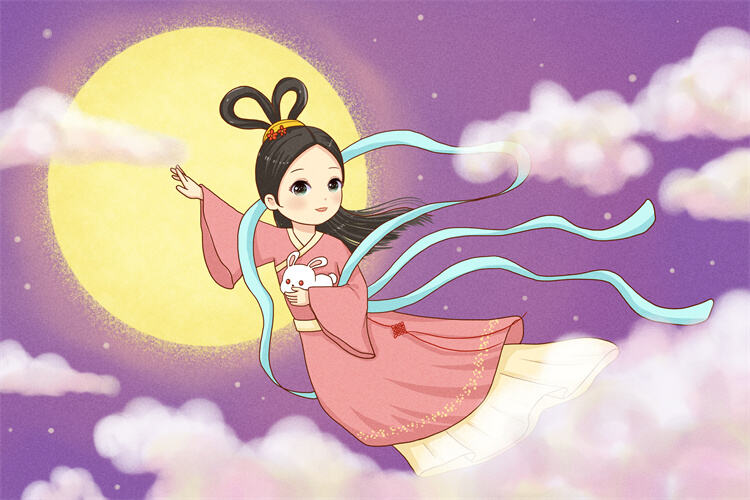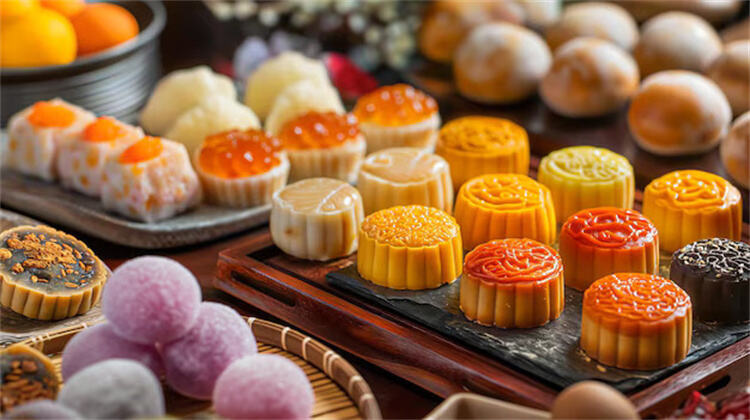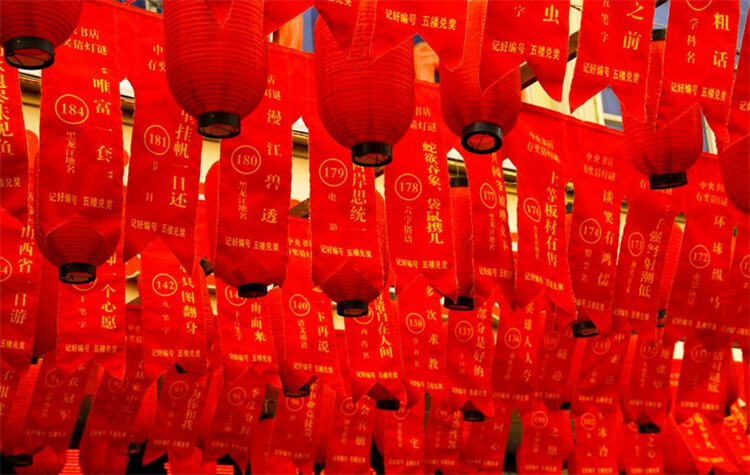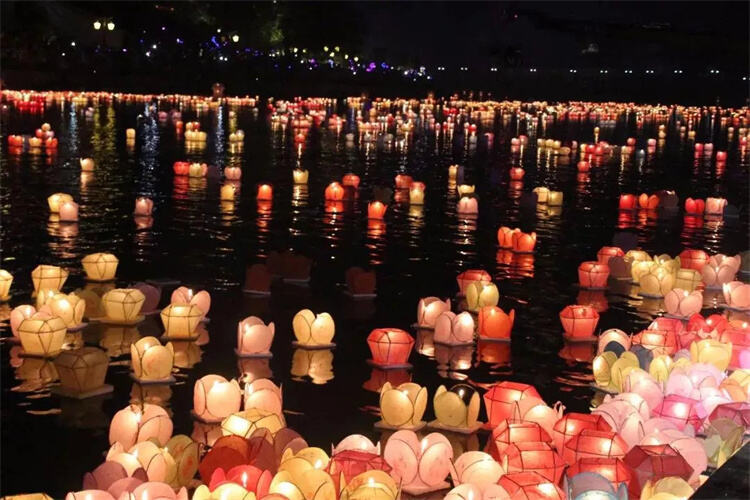The Mid-Autumn Festival, also known as "Moon Eve", "Autumn Festival", "Mid-Autumn Festival", "August Festival", "August Meeting", "Moon Chasing Festival", "Moon Playing Festival", "Moon Worship Festival", "Daughter Festival", and "Reunion Festival", is a traditional Chinese festival held on the 15th day of the eighth lunar month. It is named so because it is exactly the middle of the three autumns.
The Mid-Autumn Festival originated from the sacrificial activities of ancient emperors. On this day, the emperors would hold activities to worship the moon and worship the moon. The Mid-Autumn Festival originated in the pre-Qin period, became popular in the Han Dynasty, was finalized in the Tang Dynasty, and became popular after the Song Dynasty. During the autumnal equinox, it is the ancient "Moon Worship Festival". The Mid-Autumn Festival comes from the traditional "Moon Worship Festival".
According to research, the original "Moon Worship Festival" was set on the "Autumnal Equinox" of the 24 solar terms in the Ganzhi calendar. However, since the day of this day in the eighth month of the lunar calendar is different every year, there may not be a full moon. Later, the "Moon Worship Festival" was adjusted from the "Autumnal Equinox" to the 15th day of the eighth lunar month. Moon worship is a very old custom in China. It is actually a worship activity of the "Moon God" by the ancients in some places in ancient China. Moon cakes were the offerings for worshiping the Moon God during the Mid-Autumn Festival in ancient times. It has been passed down and formed the custom of eating moon cakes during the Mid-Autumn Festival. In ancient times, every Mid-Autumn Festival, people would put round fruits and vegetables symbolizing a good harvest on the incense table, kneel down to worship the moon, and pray for the safety and good fortune of their families.

Chang'e Flying to the Moon:
In ancient times, there were ten suns in the sky at the same time, which dried up the crops and made people live in misery. A hero named Houyi was extremely powerful. He sympathized with the suffering people, pulled the magic bow, shot down nine suns in one breath, and ordered the last sun to rise and fall on time to benefit the people. Houyi's wife was named Chang'e. In addition to teaching and hunting, Houyi was with his wife all day long. Many aspiring people came to learn from him, and the evil-minded Peng Meng also mixed in.
One day, Houyi went to Kunlun Mountain to visit friends and seek the truth. He asked the Queen Mother for a packet of immortality medicine. It is said that taking this medicine can immediately ascend to heaven and become an immortal. However, Houyi was reluctant to leave his wife behind, so he temporarily gave the immortality medicine to Chang'e for safekeeping. Chang'e hid the medicine in the treasure box on the dressing table. Three days later, Houyi led his disciples out hunting. Peng Meng, who had ulterior motives, pretended to be sick and did not go out. Not long after Houyi led everyone away, Peng Meng broke into the backyard of the inner house with a sword and forced Chang'e to hand over the immortality medicine.
Chang'e knew that she was no match for Peng Meng. In a critical moment, she turned around, opened the treasure box, took out the immortality medicine and swallowed it in one gulp. After Chang'e swallowed the medicine, her body immediately floated off the ground, rushed out of the window, and flew into the sky. Because Chang'e was worried about her husband, she flew to the moon closest to the human world and became an immortal. In the evening, Houyi returned home, and the maids cried and told what happened during the day.
Hou Yi was shocked and angry, and drew his sword to kill the villain, but Peng Meng had already escaped. Hou Yi was so angry that he beat his chest and stamped his feet, looking up at the night sky and calling Chang'e. At this time, he found that the moon today was particularly bright and clear, and there was a swaying figure that looked like Chang'e. Hou Yi missed his wife, so he sent people to Chang'e's favorite back garden to set up an incense table, put the honey and fresh fruits that Chang'e usually liked to eat, and offer sacrifices to Chang'e in the Moon Palace. After hearing the news that Chang'e flew to the moon and became an immortal, the people set up incense tables under the moon and prayed to the kind Chang'e for good luck and peace. From then on, the custom of worshiping the moon during the Mid-Autumn Festival spread among the people.
Moon cakes, also known as moon cakes, harvest cakes, palace cakes, reunion cakes, etc., are tributes to the moon god during the Mid-Autumn Festival in ancient times.Moon cakes were originally used as offerings to the moon god. Later, people gradually regarded watching the moon and tasting moon cakes during the Mid-Autumn Festival as a major symbol of family reunion.

The round shape of mooncakes implies reunion and completeness, and symbolizes the beautiful reunion and blessings between relatives and friends. People give each other mooncakes during the Mid-Autumn Festival to express their thoughts and wishes for their relatives and friends.
Now according to the taste classification, the more common mooncakes are: five-nut mooncakes, jujube paste mooncakes, pineapple mooncakes, red bean paste mooncakes, lotus seed paste and egg yolk mooncakes, black sesame mooncakes.
The Mid-Autumn Festival is known as the "Reunion Festival", which is inseparable from the seasonal characteristics of the festival. Autumn is the season of harvest. After the crops are harvested, people often have time and opportunities to reunite with their relatives. Since ancient times, the Mid-Autumn Festival has had a strong family atmosphere, and many wanderers choose to return home on this day to reunite with their families.
During the Mid-Autumn Festival, people will hang many lanterns in public places and write riddles on the lanterns for everyone to guess, adding to the fun of the festival. Riddles come in various forms, and the content of the riddles can be word riddles, poetry riddles, idiom riddles, etc. By solving riddles, participants can not only show their talents, but also enjoy entertainment and fun in the process. Guessing riddles is not only an intellectual challenge, but also a social activity. Participants often enhance their feelings for each other through mutual discussion and competition.

Nowadays, playing with lanterns during the Mid-Autumn Festival is mostly concentrated in the south. For example, at the Foshan Autumn Color Fair, there are all kinds of lanterns: sesame lanterns, eggshell lanterns, shavings lanterns, straw lanterns, fish scale lanterns, etc.; in Nanning, Guangxi, in addition to various lanterns made of paper and bamboo for children to play with, there are also very simple grapefruit lanterns, pumpkin lanterns, and orange lanterns. Nowadays, in some areas of Guangdong and Guangxi, the habit of arranging lantern festivals in night markets during the Mid-Autumn Festival is still retained for children to play with.

On May 20, 2006, the State Council of China included the Mid-Autumn Festival in the first batch of national intangible cultural heritage lists. Since 2008, the Mid-Autumn Festival has been listed as a national statutory holiday.
Mid-Autumn Festival is a festival full of tradition and emotion. It not only represents the celebration of the harvest, but also a profound reflection of family affection and reunion. From eating moon cakes to guessing lantern riddles and playing with lanterns, all these customs convey people's yearning for a better life.

During the Mid-Autumn Festival, many Chinese people send Mid-Autumn Festival cards or text messages to express their best wishes to family and friends. The most popular greeting is "Happy Mid-Autumn Festival."
Mid-Autumn Festival is coming soon. On behalf of all the HNJBL family, I wish you all a happy Mid-Autumn Festival!
 Hot News
Hot News
Copyright © Henan Jinbailai Industrial Co.,Ltd All Rights Reserved - Privacy policy